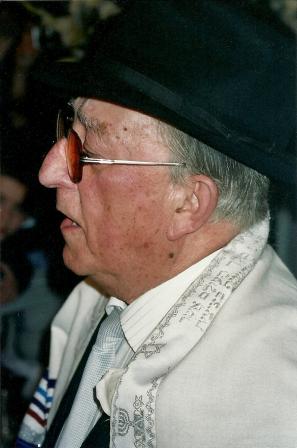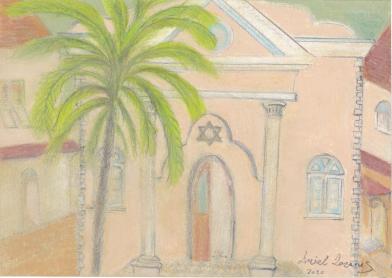Performed by Reverend Abraham Lopes Cardozo
Mizmor le-david (Psalm 29)
This is a rhythmicized example of the Hebrew psalmody used for the Sabbath eve (compare with no. 9 above). Each verse is set to a simple syllabic melody that consists of two main motifs, expanded or contracted according to the length of each verse of the Psalm. This technique of Psalm recitation is widespread among Sephardi communities. The tunes used by the Western Sephardi Jews are strikingly similar to those used at the synagogues in then major urban centers of Morocco, a further proof of the liturgical music links between these Jewish centers in the past and of the ongoing presence of hazzanim of North African origin in Western Sephardi synagogues. Prior to the 20th century, lay members of the Spanish-Portuguese congregations were granted (or were even encouraged to buy) the honor of singing the opening Psalms of the service with melodies such as the one heard here. By the beginning of the 20th century however, this melody was performed in Amsterdam by the choir. The last verse receives a special musical treatment, a sort of cadential pattern that leads to an end in a different mode. This ending was probably learned by Rev. Lopes Cardozo when as a child he sang in the choir in Amsterdam. The same melody was also sung at the Spanish-Portuguese synagogue in London and was transcribed by Aguilar-De Sola (1857: 10, no. 13).






